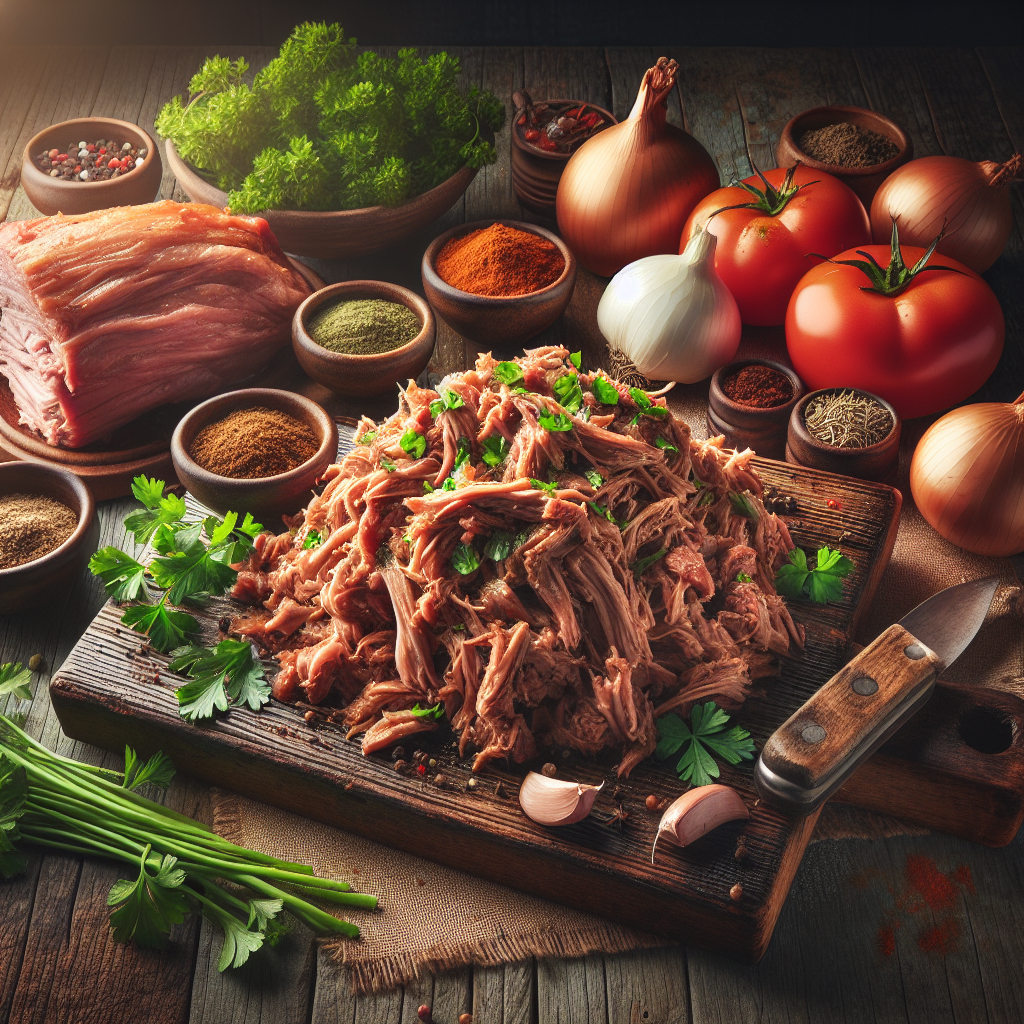Delectable Pulled Pork Recipe: A Journey Through Flavor and Culture

Pulled pork—a dish that conjures up images of summer barbecues, backyard gatherings, and hearty comfort food. This succulent, tender meat has transcended regional borders and food trends, finding a place in the hearts (and stomachs) of people all over the world. In this blog post, we’ll explore the cultural significance of pulled pork, its historical roots, and provide you with an easy recipe to create this flavorful dish right at home.
What is Pulled Pork?
Pulled pork is a barbecue dish made from pork shoulder (also known as pork butt) that is slow-cooked until the meat is so tender it can be easily "pulled" apart with a fork or simply by using your hands. The meat is typically seasoned with a dry rub or marinated in a rich sauce, then cooked low and slow, often smoked or roasted. This method not only enhances the flavor but also creates that melt-in-your-mouth texture that makes pulled pork such a beloved dish.
A Historical Look at Pulled Pork
The origins of pulled pork can be traced back to the Southern United States, where barbecuing is not just a cooking method but a deeply-rooted cultural tradition. From Carolina to Texas, each region boasts its distinct preparation methods, seasonings, and sauces. Carolina-style pulled pork, for example, is famous for its vinegar-based sauces, while Texas style often leans towards a spicier, tomato-based barbecue sauce.
Traditionally, this dish was a way to utilize tougher cuts of meat. Slow cooking allowed families to make the most of what they had. Pulling the meat apart created a dish that was not only tasty but also easy to share, making it a staple in communal meals and celebrations, from cookouts to holiday feasts.
Nutrition Benefits of Pulled Pork
Beyond its rich history and cultural significance, pulled pork offers several nutritional benefits. It is an excellent source of protein and provides essential vitamins and minerals, especially B vitamins, selenium, and zinc. Depending on how it’s prepared, pulled pork can be a part of a balanced diet. If you're curious about the specific nutritional content of pulled pork, check out this informative page: Pulled Pork Nutrition.
Delicious Pulled Pork Recipe
Ingredients:
- 3-4 lbs pork shoulder (also known as pork butt)
- 1 tablespoon olive oil
- 2 tablespoons brown sugar
- 1 tablespoon paprika
- 1 tablespoon garlic powder
- 1 tablespoon onion powder
- 1 tablespoon chili powder
- 1 teaspoon cumin
- Salt and pepper to taste
- 1 cup of your favorite barbecue sauce (store-bought or homemade)
- Buns for serving (optional)
- Coleslaw for topping (optional)
Instructions:
- Prepare the Dry Rub: In a small bowl, mix the brown sugar, paprika, garlic powder, onion powder, chili powder, cumin, salt, and pepper. This flavorful blend is what will make your pulled pork shine!
- Season the Pork: Rub the olive oil all over the pork shoulder. Generously apply the dry rub on all sides of the meat, ensuring that the flavors penetrate deeply.
- Cook the Meat:
- Slow Cooker Method: Place the seasoned pork in a slow cooker. Cover and cook on low for 8-10 hours or high for 5-6 hours, until the meat is tender and easily pulled apart.
- Oven Method: Preheat your oven to 300°F (150°C). Place the pork in a roasting pan, cover with foil, and cook for about 4-5 hours, removing the foil for the last hour.
- Shred the Pork: Once fully cooked, remove the pork from the cooker or oven and let it rest for about 15 minutes. Use two forks to shred the meat into bite-sized pieces.
- Add Barbecue Sauce: Toss the pulled pork with your favorite barbecue sauce, adjusting the amount to suit your taste preferences.
- Serve & Enjoy: Serve the pulled pork on buns with a side of coleslaw or alongside your favorite sides, like baked beans or corn on the cob. Dig in and savor the flavors!
Conclusion
Pulled pork is not just a meal; it’s a culinary tradition that tells a story of communal dining, flavor development, and cultural heritage. With its tender, juicy texture and endless versatility, it’s easy to see why it has become a favorite for many.
Now that you know a little more about pulled pork, its significance, and how to prepare it, why not gather some friends or family for a delicious barbecue? Remember to enjoy your food, savor every bite, and celebrate the flavors of pulled pork! Happy cooking!